My 2019 Ultralight Backpacking Gear List (10 lb Base Weight)
This year I’m planning on doing a lot more shorter (3-4 day) backpacking trips in my local California mountains, where temps are warm and there isn’t a lot of rain or mosquitoes. So I figured I might as well shave a few pounds off my pack weight…
For this gear list I went with a smaller backpack (the new ULA Photon,) a tarp shelter from Six Moon Designs, sleeping quilt and torso-length inflatable sleeping pad. The rest of my gear is pretty similar to what I have carried in the past (with a few changes.)
Despite being only a few pounds lighter than my regular long-distance backpacking gear list, this little pack feels feather light! It’s surprisingly roomy too. I’m able to fit 3-4 days worth of food, up to 4 liters of water and all of my gear inside.
The Big Three (Backpack, Shelter, Sleep System)
Weight: 5.4 lbs

- Backpack: ULA Equipment Photon (25.5 oz)
- Shelter: Six Moon Designs Deschutes Tarp (13.3 oz)
- Stakes: 10 Titanium Stakes (2.3 oz)
- Ground Cloth: 42×84 inch Tyvek Ground Cloth (4.3 oz)
- Sleeping Bag: Enlightened Equipment Revelation 30°F Reg/Wide (21 oz)
- Sleeping Pad: Sea to Summit UL Insulated Mat X-Small (13.3 oz)
- Pillow: Sea to Summit Aeros Pillow Premium (2.6 oz)
- Stuff Sacks: Sea to Summit Ultra-Sil (8L,4L,4L), GG Air Zippsack (9L) (3.9 oz)
Clothing Packed
Weight: 1.3 lbs
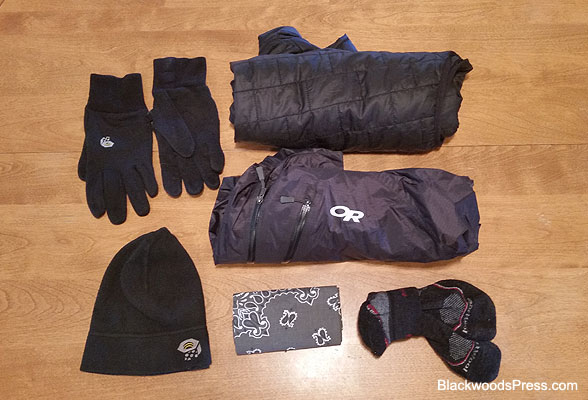
- Insulated Jacket: Patagonia NanoPuff Vest (9 oz)
- Rain Jacket: Outdoor Research Helium II Jacket (6.6 oz)
- Warm Cap: Mountain Hardware Microdome Cap (0.9 oz)
- Gloves: Mountain Hardware Powerstretch Gloves (1.4 oz)
- Spare Socks: Smartwool PHD Outdoor Light Mini Socks (2 oz)
- Bandana: Cotton Bandana (1.1 oz)
Cooking & Hydration
Weight: 1.4 lbs
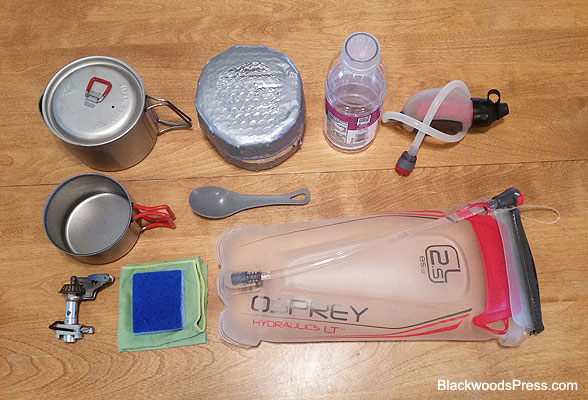
- Camp Stove: Snowpeak LiteMax Stove (2 oz)
- Cook Pot: MSR Titan Kettle (4.2 oz)
- Cup: Evernew 400FD Titanium Cup (1.7 oz)
- Pot Cozy: Home-made Pot Cozy (1.4 oz)
- Spoon: Sea to Summit Delta Spoon (0.2 oz)
- Pot Scrubber: Scotch-Brite Pad/Sponge (0.4 oz)
- Dish Towel: Pack Towel (0.3 oz)
- Water Bladder: Osprey Hydraulics LT 2.5L Reservoir (6.2 oz)
- Water Bottle: 20 fl oz Vitamin Water Bottle (1.3 oz)
- Water Filter: MSR Trailshot Filter (4.9 oz)
Survival & Miscellaneous
Weight: 2.2 lbs

- Trail Map: Pocket Atlas (2.9 oz)
- GPS Receiver: Garmin Oregon GPS (6.2 oz)
- Emergency GPS Locator: SPOT Satellite Messenger (4.7 oz)
- Compass: Silva Forecaster (0.5 oz)
- Light: Petzl Zipka Headlamp (2.4 oz)
- Multi-Tool: Swiss Army Knife Classic (0.7 oz)
- Fire Starter: Mini Bic Lighter (0.4 oz)
- Survival Kit: SOL Pocket Survival Pak Plus (6.3 oz)
- First Aid Kit: Adventure Medical 0.3 First Aid Kit (3.2 oz)
- Trauma Bandage: Adventure Medical QuickClot Sponge (1.1 oz)
- Spare Batteries: AA (4) and AAA (3) Lithium (2.9 oz)
- Sleeping Pad Repair: Repair Patch (0.2 oz)
- Wash Rag: Pack Towel (0.3 oz)
- Toothbrush: Folding Travel Toothbrush (0.7 oz)
- Toothpaste: Toothpaste (0.9 oz)
- Sunscreen: Sunscreen (1.2 oz)
- Lip Balm: Carmex Lip Balm (0.4 oz)
Clothing Worn
Weight: 4.6 lbs
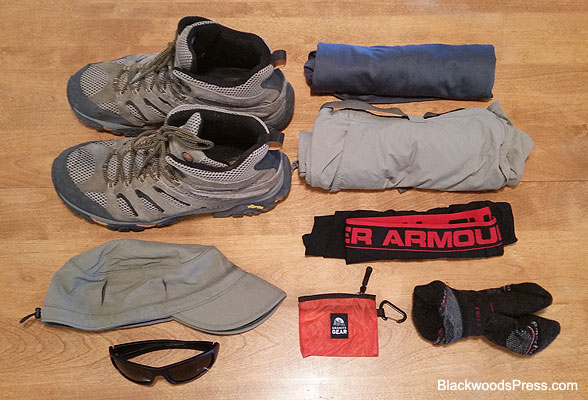
- Shirt: Columbia Tech Trek T-shirt (5.6 oz)
- Pants: Columbia Silver Ridge Pants (12.1 oz)
- Underwear: Under Armour Boxer Jock (3.2 oz)
- Socks: Smartwool PHD Outdoor Lite Mini Socks (2 oz)
- Shoes: Merrell Moab Ventilator Mid 13W (41.4 oz)
- Insoles: Montrail Enduro Sole (4.9 oz)
- Hat: Sunday Afternoons Sun Tripper (2.5 oz)
- Sunglasses: Duduma Sport Sunglasses (1.3 oz)
- Wallet: Granite Gear Hiker Wallet (0.4 oz)
Items Worn or Carried
Weight: 2 lbs
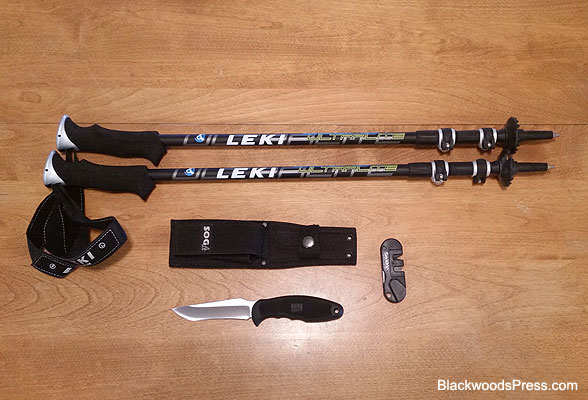
- Trekking Poles: Leki Aluminum Trekking Poles (16.8 oz)
- Knife: SOG Field Pup Knife w/ Sheath (7.1 oz)
- Knife Sharpener: Smith’s PP1 Pocket Pal (0.8 oz)
- Phone: Smartphone (6.8 oz) *Not shown.
Consumables
Weight: 10.8 lbs

- Food & Supplies: 3 Days (2 pounds per day) (96 oz)
- Water: 2 Liters (70.5 oz)
- Fuel: Small Fuel Canister (6.8 oz)



 My name is Erik Asorson, aka "Erik the Black." I'm a long-distance backpacker, cartographer and author of
My name is Erik Asorson, aka "Erik the Black." I'm a long-distance backpacker, cartographer and author of 

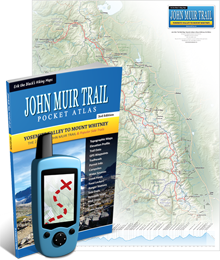
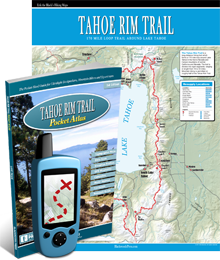
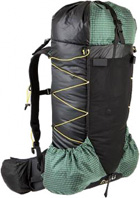
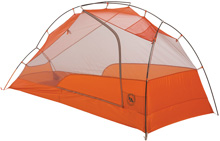
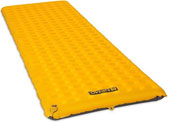
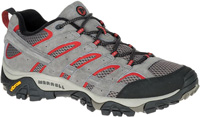

I tried out every air pad I could at a local store, looking for the ideal intersection of comfort and weight. I find the Sea to Summit is the best so far. Not a fan of ULA packs, however.
Do you ever use a bear can? Everywhere I go in the Eastern Sierras requires the use of a bear can, which takes up a massive amount of pack space and makes it seem impossible for me to use any of these ultra-lightweight packs.
Thanks!
Yes, I use a bear canister when it is required. I use my ULA OHM 2.0 pack in bear county with a Bearvault 500 and strap it horizontally on top of the backpack using the long top strap. It’s more comfortable than trying to stuff a bear canister inside the backpack and makes it easy to get to for grabbing food or using it as a stool during breaks.
Nice list. I’ve never seen a UL equipment pack before, but it’s a great price for how light it is. Is is cuben fiber?
Tyler: ULA’s packs are made of a ripstop nylon (I think it’s called Robic) that is very durable, but still surprisingly light. I like it better than cuben fiber. I have some ULA packs that are ten years old and have seen heavy use and are still in great shape.
2 questions:
1. Do you still have your Day Hike list somewhere? I am doing some small day hikes prepping for AT and I liked the list you had before.
2. Also, do you still think the p90x system is the best training system to get prepped for hiking?
@Trey: You can find my old day hiking gear list here. I still carry mostly the same stuff for day hikes, but a slightly bigger and more durable pack (Osprey Daylite Plus.) I still do P90X and think it is a great program for general fitness, but the best training for hiking specifically is walking. If you combine them into a hybrid program (do the weight training portions of P90X on Mon, Weds and Fri and long walks/hikes on Tues, Thurs and Sat) you’ll get the best of both worlds.
Eric, do you ever bring “crocs” or something like that for stream crossings? My first thought was to take off my socks and pull out my insoles and just wear my ventilators .
@James: I used to carry camp shoes years ago, but not anymore. I do just what you said. The ventilators dry out within a couple of hours on a sunny day. Plus the sole is so much better for getting traction on rocks and loose stuff at the bottom of streams than the smooth soles on crocs or flip-flops.
Hi, Erik! I notice that you use a 8.5L MSR pot in addition to a coffee mug. Though, some ultralighters would insist that the mug alone is sufficient and, in fact, for simply rehydrating freeze-dried food it probably is. What is the minimum pot size that I could get away with if I plan to regularly eat things like Knorr noodles or Idahoan mashed potatoes that might require a bit more space to prepare than a 400ml mug? Thanks!
@Colorado Jones: I would recommend at least 700 ml. That will fit Knorr sides and Mashed Potatoes, and barely fit a full box of Mac & Cheese (but it’s tight.) I like the 850 ml pot because it gives me a bit more stirring room. Plus titanium is so light that the weight difference is negligible.
Thanks, Erik! Very helpful!
You moved away from the safety glasses you used to wear. I laughed at first until I tried them, and now wear the generic 3M safety glasses on all my hikes too and never worry if I lose or break a pair.
How are your Dudumas holding up? Any scratches on the lenses?
@Joe: Scratches on the lenses was my main beef with the 3M safety glasses, though I really liked everything else about them. I just got the Dudomas so haven’t put them through the paces yet, but they had a lot of good reviews on Amazon so I figured I’d give em a whirl.
Need to add wag bags and/or hand trowel. “Never fail to confirm the obvious” Everyone’s go to do their business
@Marcus: Trekking pole works fine for digging cat holes. No need for a special piece of equipment.
Great point! Second question: I’m headed out on the JMT (Mono Pass toward Happy Isle) for approximately 10 days on August 1. We’re hoping the snow pack will have melted. Are there any useful websites or blogs that can give us some updates other than the .gov sites?
Seriously. Yes. GPS is the way to go for back up. Phones are great but very spotty , and can lead you in the wrong direction or you are using it for something else like the camera. I’m sure if he had a camera packed, someone would say “just use your phone” as well. Also. Great seeing prepared hikers that have good fixed blade knives. I’ve followed your gearlists before and love them. I know weight and quality are at the top of your gear. Gotta get rid of that hunky,heavy sog blade and get a Mora bushcraft or something like that. Simply the best hiking/camping blades for saving weight.
Paracord to hang a bear bag? I see that the SOL kit comes with 10 foot of rope, but that’s not really adequate for a proper hang.
I just switched to the ULA Circuit.
It is a little lighter than my previous pack but fits so much better and a much more comfortable carry.
Good luck this summer.
?why not polycro over tyvek? Just a ? Trying to decide myself? But my real ? Is why no AT map? Yours are so helpful. Thanks.
@Will: I have a polycro ground sheet too, but it’s just a little too thin for me. I like to stake the corners out and Tyvek works better for that (I use plastic adhesive grommets on the corners that are designed for hanging business banners to make staking points.) An Appalachian Trail Atlas is something I’ve wanted to do for years, but I’ve been so busy I just haven’t been able to get out and hike the trail yet. Maybe I’ll do it next year for my 40th birthday.
I don’t see anything for when you have to s**t in the woods. I guess you could use your trekking pole to dig a cat hole, but what if you need to go in the middle of the night? Do you pre dig a hole and then mark in so you can find it in the dark? What about wipes? I don’t see anything for that either unless you plan on using local vegetation.
@Fredrick: Trekking pole works fine for digging cat holes. I put toilet paper and wet wipes in with my food rations, that way I never run out. I pre-pack a days worth of food/supplies into individual 8×10 ziplocs and keep a bunch of them on hand. That way, whenever I want to go for a hike, I can just grab as many days as I need and go (or mail them to a post office for resupplies on longer hikes.) Sort of like how they do with 24 hour military ration packs.
12 paper towels in a zip-lock bag…serve for cleaning dishes, as a body wash towel, or in strips, for toilet needs. Bury well! So much infatuation with knives which are good to prepare firewood or for food prep or repair of damaged gear. I just carry a small and light 9mm pistol for chasing off anything that bites of attacks. Yes, I have a license and I follow the principle of ‘out of sight, out of mind’. I sleep more soundly with a back-up. I do not live in California or New York!
Just some thoughts:
GPS? – use your phone
Swiss Army Knife and SOG field pup with sharpener – do you need them both? Get a real multipurpose tool (I have a leatherman style GS) and a bigger knife (I have a Gerber foldable with a 3″ blade of which half of that is serrated teeth – could cut small wood)
Survival Kit – make your own
I have seen a home-made gravity water filter using a Sawyer filter (not the mini), and a 2L bag. Filter into your pot or bottle. I carry a 4L Sawyer gravity system because it services my wife and me.
I also use the JetBoil SOL because we use dehydrated food and eat them out of the freezer bags and a pot cozy, and only need boiled water. The JetBoil is so fuel efficient, has its own cup (we do use Snow Peak titanium, double wall cups to drink warm liquids) I believe my weight penalty is very small.
My list has evolved over the years since you got us started several years ago. Thanks for getting us started.
@Dennis: Thanks for the feedback. I guess I am a bit behind the times with my GPS. But my phone battery life sucks, so I don’t use it for much except snapping occasional pictures and listening to half an hour of audio books before bed. I like that I can carry extra AAs for my GPS and swap them out as needed, since I use it all day long when I’m doing trail mapping. I’ve used the Sawyer filters and I like them, but this little MSR Trailshot is very impressive so far. It pumps out water crazy fast with very little effort. Not like the old fashioned pump filters at all. Supposed to be very clog resistant and easy to back-flush too.
I had the trail shot last year and had to switch back to my mini mid trip. I couldn’t back flush the trail shot and it clogged up. How do you keep it running?
@James: I’ve only used the Trailshot a dozen times so far so haven’t run into any clogs or slow down yet, but supposedly you can clean it by shaking water around inside the bulb for 20 seconds, then removing the inlet hose and blow it back out the intake port. Here’s a video I found on Youtube showing the procedure: https://www.youtube.com/watch?v=ks1shhuft1g
I can tell you definitively, that that did not work for me. It worked great about 12-16 liters. Bring a backup for your backup.
@James: Thanks for the heads up.
I’m on the JMT in mid August and looking at the snow remaining in June has me thinking about including more cold weather items. Any thoughts?
@James: For colder weather I would swap the 30 degree sleeping bag for a 15-20 degree, add lightweight merino wool long underwear and switch the vest out for a long-sleeve puffy jacket.
How about my micro spikes?
I’d definitely add microspikes to my gear list of weather conditions warranted that.